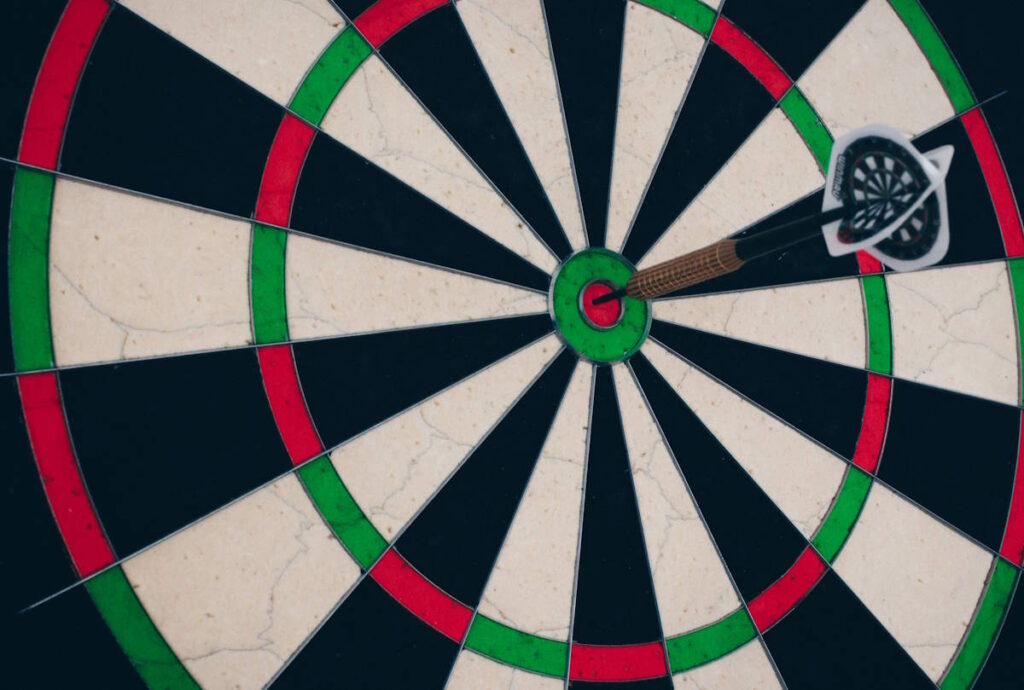Beat Your Phobia with SMART Goals
Finding it hard to overcome a phobia? SMART goals could help you to make real, visible progress. Learn more by reading this post and downloading our worksheet.

If a phobia is affecting your life, you may have already decided that it's time to take action. However, it isn't always easy to know where to start. Part of the problem is that we don't always set goals in an effective way. If this sounds like you, then it's time to learn about SMART goals.
SMART goals can help you to stop putting off dealing with your phobia and start making tangible changes. Read on to discover why SMART goals work so well and to find out how you can integrate them into your phobia treatment plan. We'll even throw in a worksheet that you can use to draw up your own!
Beating your phobia
Phobias have the potential to wreak havoc on your life. If you're living with one, you may notice a wide range of symptoms when facing the object of your fear. These come in three varieties.
First are the physical symptoms: a racing heartbeat, sweating, shaking, feeling dizzy and more. Then there are the emotional symptoms, including feelings of panic, distress, confusion and embarrassment. You may also experience psychological symptoms, including feeling anxious, depressed or overwhelmed.
The desire to avoid feeling this way leads many people to go out of their way to prevent themselves from triggering their phobia. Unfortunately, this kind of avoidant behaviour not only fails to solve the problem, but can actually reinforce your phobic beliefs. As such, your fear only increases.
It's easy to understand why people want to try to overcome their phobias. However, many people fail at the first hurdle by setting goals that won't actually help them to achieve their objective. Let's examine how this happens…
Why people fail to achieve their goals

Before we examine things from the point of view of tackling a phobia, let's take a look at how you set goals more generally. Say, for example, you wanted to start learning to play the piano from scratch. You might think that your goal in this scenario is simple: “learn to play the piano”. However, such a broad and vague statement is unlikely to help you to get any closer to the end result you actually want.
Let's pick apart that goal statement in detail by asking a few simple questions about it:
- Why do you want to learn to play the piano?
- What level of proficiency are you hoping to achieve?
- How, where and when will you practise?
- Do you have the time and money to afford to practise?
- Will you practise alongside a tutor—and if so, who?
- When do you want to have achieved your goal?
You may well be able to answer all of these questions in your own mind. The problem is that the simple goal of “learning to play the piano” addresses none of them. In order to be able to make visible progress, you need to adjust the kinds of targets you set yourself.
What is a SMART goal?
SMART is a framework that can help you to define your goals more clearly. The word SMART is used as an acronym for five things that your goal should be:
- Specific — the goal must be clear and well defined
- Measurable — it must be possible to monitor your journey towards the goal
- Achievable — the goals you set should be ambitious, but still possible for you to accomplish
- Relevant — your goal should take the bigger picture into account and align with your other objectives
- Time-bound — there should be a target date for your goal
Let's apply these principles to our aspiring pianist. Instead of the imprecise statement we saw above, we'll make this into a truly SMART goal:
I want to learn to play my partner's favourite song on the piano by their birthday, which is six months away. To achieve this goal, I will spend three hours per week practising on my own piano, one of which will be with a tutor.
This goal is specific, and is measurable, as you can track how well you're able to play the song. It's time-bound, as you need to achieve it within six months. However, it's also achievable: you're not aiming to become a virtuoso, but instead to play just a single piece. Finally, it's relevant, as it's a gift from you to your partner.
The real beauty of SMART goals such as this is that they help you to get things done. If you had stuck with the goal of “learning to play the piano”, it's likely that you'd never have known what progress really looked like, become frustrated with yourself, or neglected it altogether. With your refined objective, you have a clear path forward, and a way of getting there.
How can SMART goals help you to beat your phobia?

We now know that setting a SMART goal is an effective way of fulfilling your ambitions. However, when it comes to our mental health, it's all too common for us to aim for things that are ambiguous, impossible to assess, or go far beyond what we can reasonably do. Luckily, we know that changing the way we plan targets for ourselves can make it more likely for us to reach them.
In the context of dealing with a phobia, SMART goals allow us to see how far we've come. They also make it possible for us to manage our symptoms without putting the onus on us to feel no fear at all. As such, they can help us to work towards better mental health in manageable chunks. Let's take a look below at some examples of SMART goals for phobias.
Examples of SMART goals for phobias
Scenario #1
Kasey's friend Amina has a pet tarantula. Because Kasey has a fear of spiders, she refuses to visit Amina's home altogether. She wants to be able to feel more comfortable around spiders so that she can spend time with Amina and her other friends.
A non-SMART goal: “I should completely overcome my fear of spiders.”
Why it's not SMART: There are a lot of problems with this goal! First off, it's unlikely that this is an achievable goal for Kasey, as her phobia is currently very severe. It would be better for her to focus on reducing, rather than completely eliminating her fear. There's also no way for her to measure this goal, and no deadline by which she needs to complete it.
SMART goal: “I'll visit Kasey's house next week, and I'll spend five minutes in the same room as the tarantula.”
Why it's SMART: This is a specific goal which is time-bound and is easy to measure. It's also something Kasey can realistically do: she's not forcing herself to overcome her fear completely, just to confront it for a limited time period. It's also relevant to her life, as it will enable her to see her friends.
Scenario #2
Albert has been terrified of flying ever since he was a child. His sister's wedding is taking place in six months' time overseas, and he's worried that his phobia will prevent him from attending.
A non-SMART goal: “I will qualify as an airline pilot to beat my phobia for good.”
Why it's not SMART: While this goal is specific and measurable, it has some major issues. Firstly, there's no time limit—something which is a particular cause for concern given that he needs to attend a wedding in just six months. This also likely makes the goal unreachable for Albert. The biggest problem, however, is that it's not relevant to him. He only needs to feel comfortable as a passenger, and qualifying as a pilot is unnecessary.
SMART goal: “To get myself used to flying, I will watch at least 3 YouTube videos each week of a plane taking off, starting this week. I'll also book myself onto a fearless flyer course in three months' time.”
Why it's SMART: These are much more realistic goals for Albert, while still remaining both specific and measurable. There are fixed deadlines in place, and all of the targets he's set himself, while ambitious, are achievable.
Scenario #3
Usman has crippling social anxiety. He doesn't have many friends and has become very withdrawn and isolated. He'd like to change this by socialising more and making new friends.
A non-SMART goal: “I will make new friends at work.”
Why it's not SMART: This goal isn't quite specific enough, and it falls down on most of the other aspects of SMART, too. Once again, there's no time pressure, and there's no way for him to measure whether he's made a friend or not. While it is attainable and relevant, it's unlikely that Usman would be able to make any progress towards this goal without refining it.
SMART goal: “I will make sure that I speak to at least three people each time I'm in the office, starting on Monday. I will also pop along to the post-work five-a-side kickabout every week.”
Why it's SMART: Usman now has a path forward to socialising more. He can easily tell if he's making progress simply by knowing if he's talked to enough people at work or gone to play five-a-side football. This is a specific, measurable, attainable, relevant and time-bound goal: truly SMART!
Setting your own SMART goals
Want to have a go at creating your own SMART goals? Download the PDF below!
Beating phobias for good
Did you know that SMART goals are commonly used within cognitive behavioural therapy? This is just one of many techniques you could learn by working alongside a qualified professional.
Worried that therapy is inaccessible or unaffordable? ManageMinds is here to dispel those myths. Our aim is to ensure that therapy is available to everyone who needs it. Explore our range of therapy services today and get started with one of our BACP-registered therapists within days.
Post Date:
Author: Andy Boardman
Explore More Articles
3 Mental Health Myths Your Therapist Is Sick of Hearing
It's great that more people are talking about mental health, but not everything you hear is necessarily true. Don't fall for these 3 mental health myths!
Feeling Worried? Challenge Anxious Thoughts with These Simple Questions
Stuck in a spiral of anxious thoughts? Use these 3 simple questions to challenge negative thinking and adopt a healthier mindset.
ManageMinds Explains... Narcissists
Even wondered if you or someone you know may be a narcissist? In this guide we cover what narcissistic personality disorder is, as well as the signs you need to watch out for.


